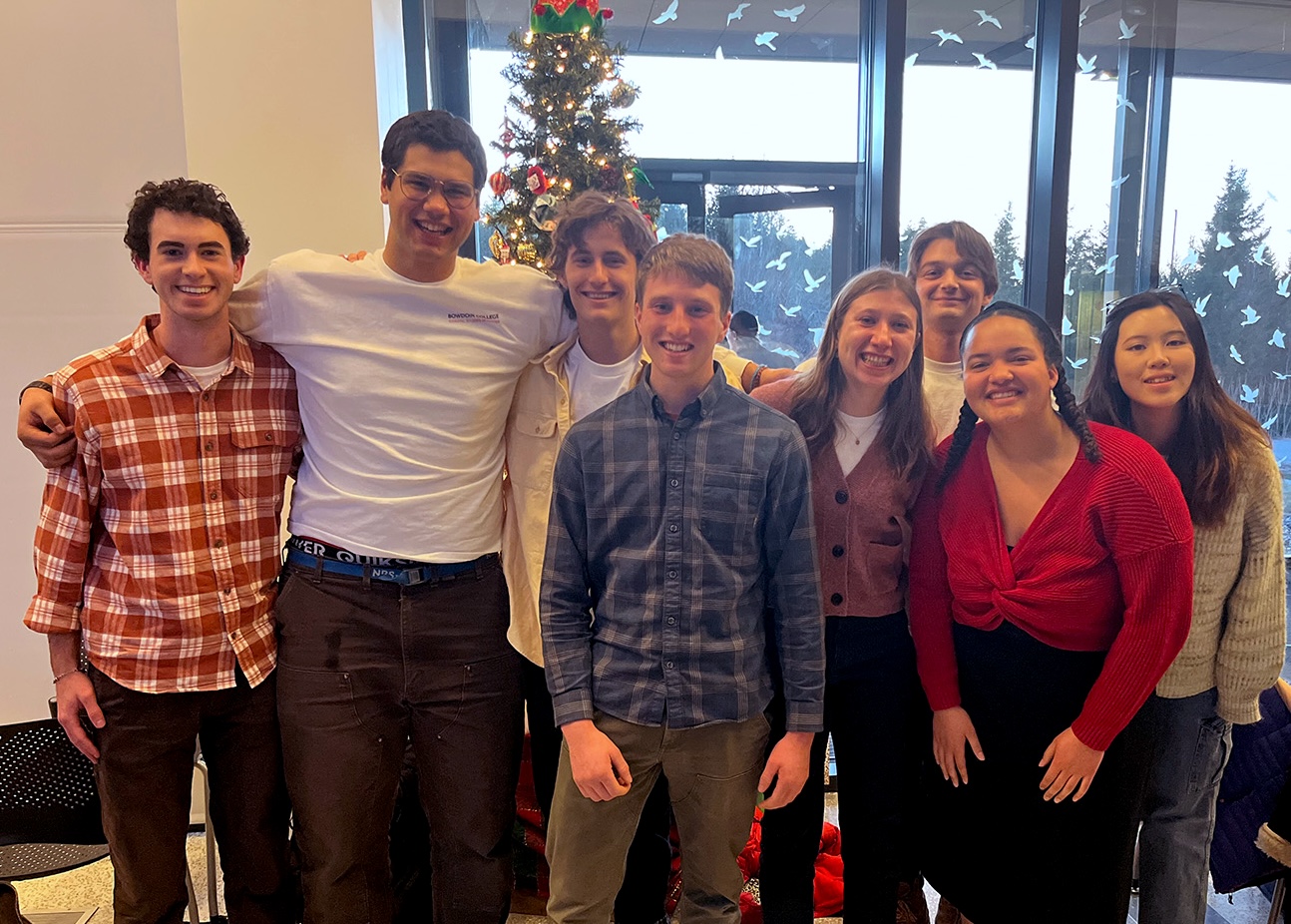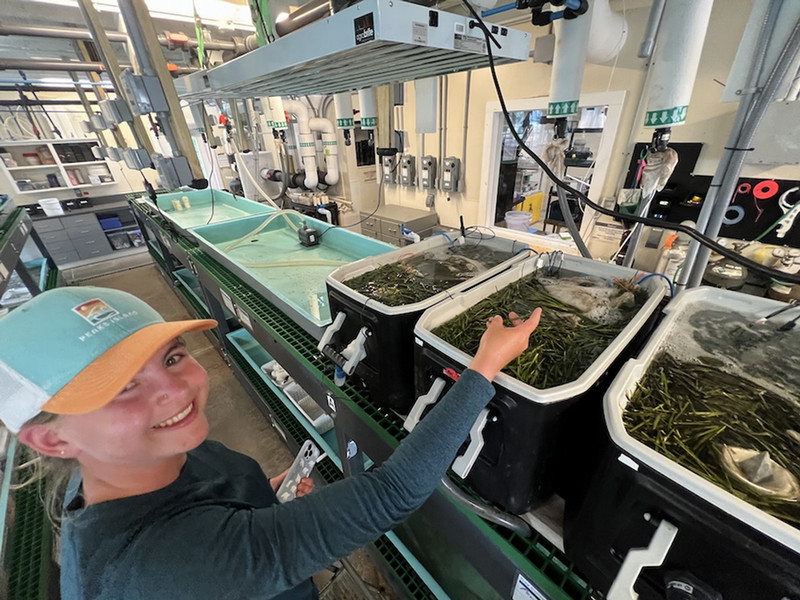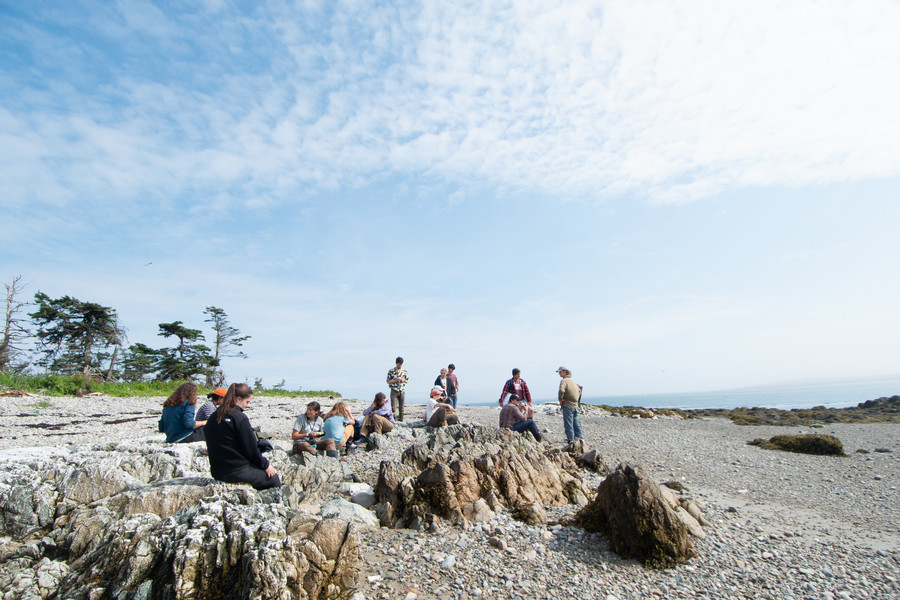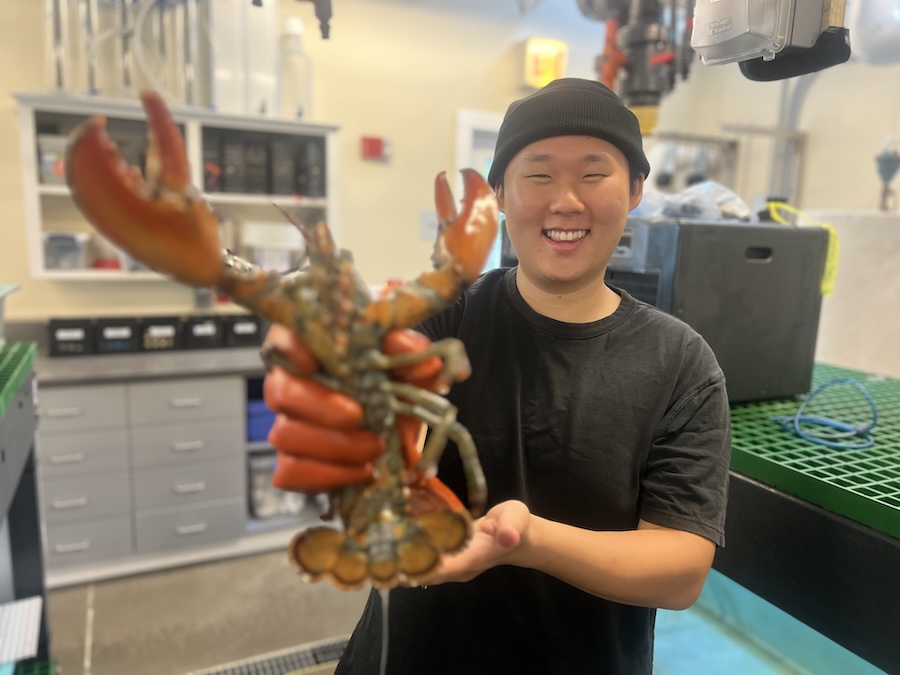Woods Hole Oceanographic Institution and Bowdoin collaborate to monitor ‘red tide’ phytoplankton
By Rosemary Armstrong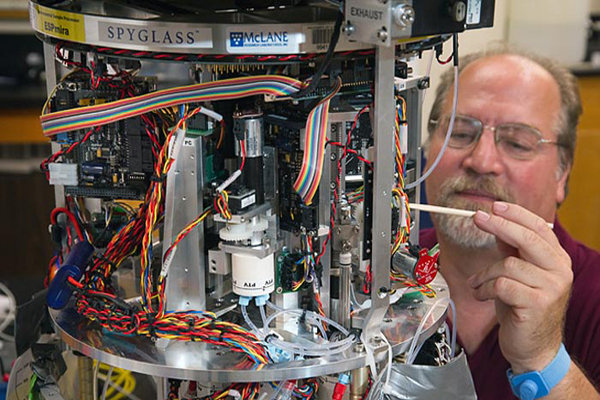
Don Anderson’s lab at Woods Hole Oceanographic Institution (WHOI) has partnered with the Coastal Studies Center to measure the abundance of red tide phytoplankton in Harpswell Sound. The marine lab is one of three real-time monitoring sites in the Gulf of Maine for the season. Our location is ideal for comparison with Lumbo’s Hole—a state shellfish monitoring site at the northern terminus of Orr’s Island and, traditionally, a red tide hot spot. Each site hosts an Environmental Sample Processor (ESP), which detects the DNA of toxin-producing Alexandrium fundyense and Pseudo-nitzschia. The ESP was developed at Monterey Bay Aquarium Research Institute (MBARI), and built by McLane Research Laboratory. In addition to monitoring harmful algal blooms, they have been used for deep-sea genetics and larval dispersal studies, and proposed as tools in the search for extraterrestrial life. The other two instruments are moored off Harpswell Neck and Ogunquit. Data from these sentinel sites are routed to regulatory agencies in Maine, New Hampshire and Massachusetts. To learn more about this project, see the Woods Hole Oceanographic Institute webpage.
This is the first year that Bowdoin has participated in the NOAA-funded project, but we anticipate continued involvement. Bruce Keafer, of WHOI, says the marine lab ESP (named Jake) is functioning better than the field sites, and has shown weak positive signals. This agrees with lower than average measurements predicted for this year, based on low overwintering levels of dormant Alexandrium cysts. We are also conducting a related experiment with mussels, Mytilus edulis, which is not possible with the moorings. Tissue toxins will be analyzed at Bigelow Laboratory for Ocean Sciences in Boothbay, with data destined for use in parameterizing large-scale predictive models of shellfish toxicity. Lab improvements, like our NSF-funded seawater conditioning systems, will build on our capability to run controlled toxicity experiments.
